Dying Light review
A dead good survival horror game with some great DLC in The Following
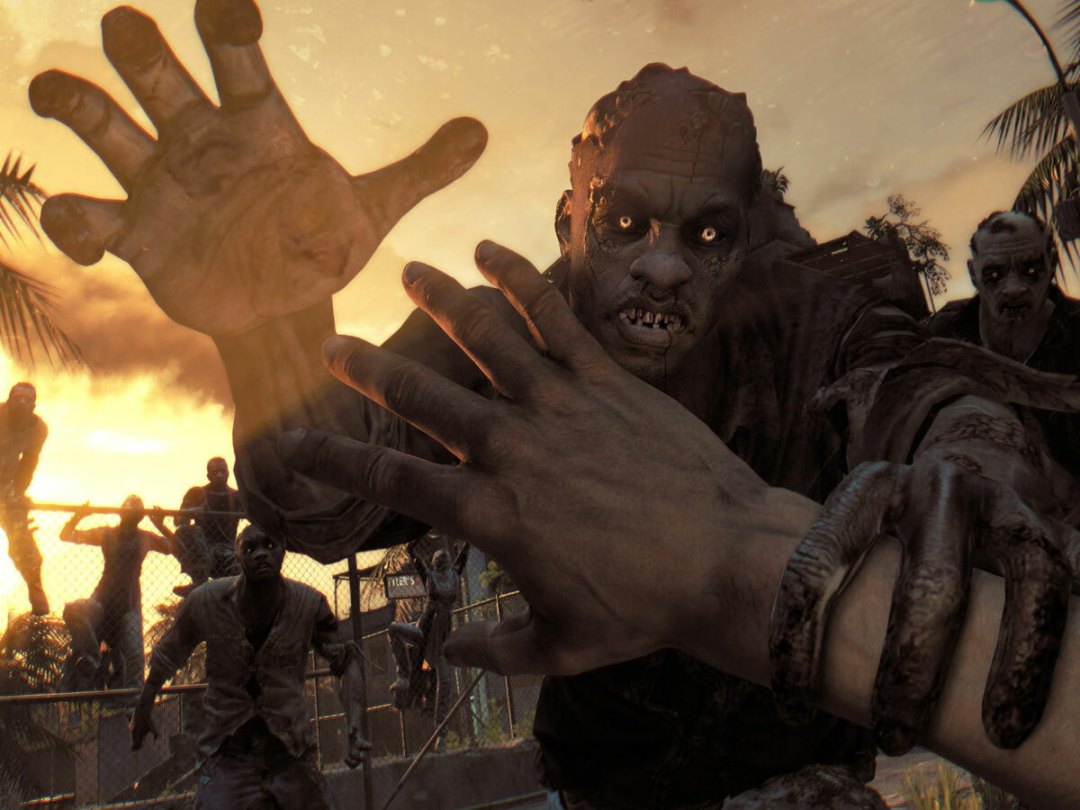
Editor’s note: We thought Dying Light was bloody brilliant when it was first released last year. To celebrate the launch of its The Following DLC, we’ve updated our original review with the Stuff verdict on its new expansion.
The late arrival of review copies is an occurrence that far too often indicates a sub par game, and an attempt by the publishers to keep that fact quiet until a few thousand copies have been bought.
That’s what happened with Dying Light, and that concerned us because Techland’s latest – a first-person open-world zombie apocalypse survival horror – has looked so promising in the run-up to its release. So has the Polish developer delivered the undead bludgeon ‘em up we all hoped for? Or a damp handful of bug-ridden ghoul guts? Thankfully, it’s more of the former than the latter.
Stop me if you’ve heard it before
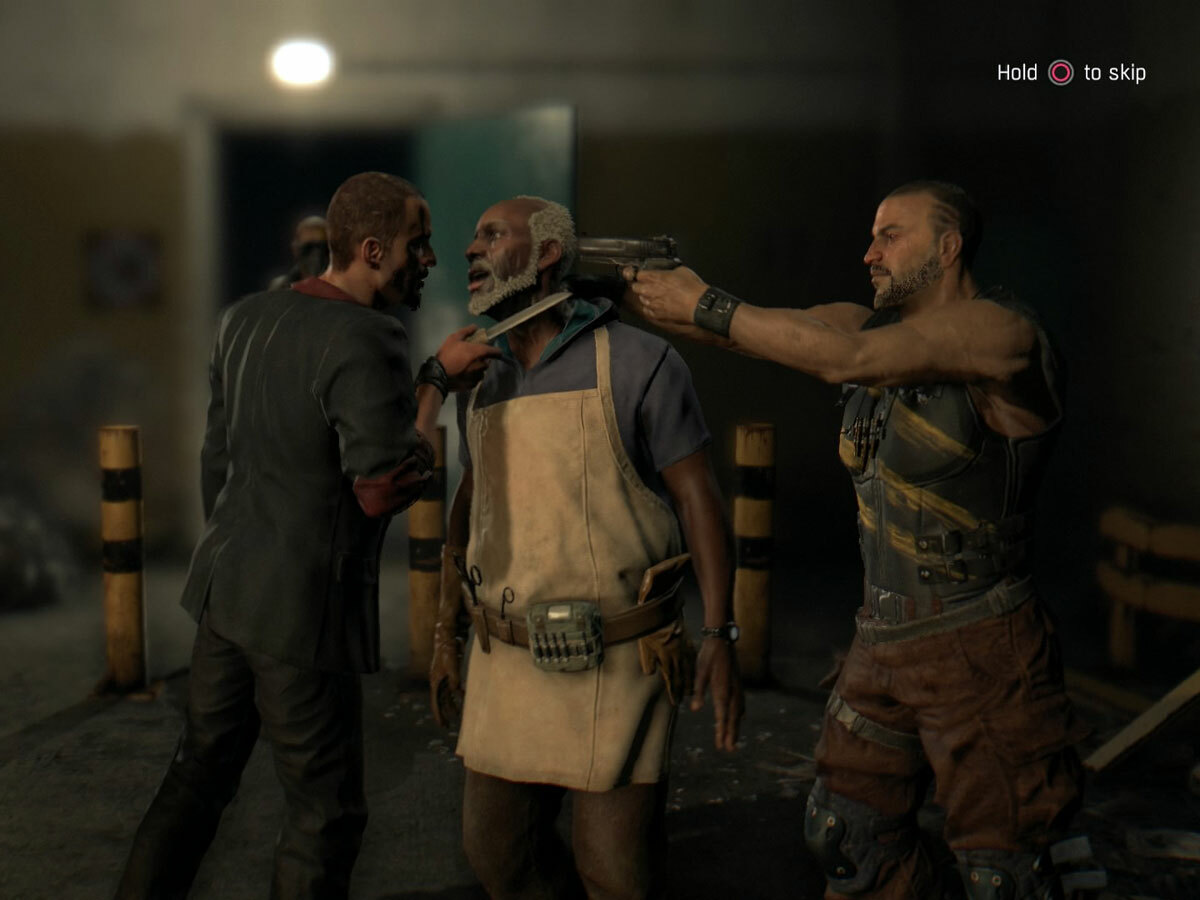
Dying Light has a story, but don’t expect anything rivalling The Last of Us in this particular zombie-infested post-disaster city. Techland has delivered straight-up B-movie fare here, with duplicitous government agencies, psychopathic post-collapse warlords and all the rest. You play as Kyle Crane, an American agent dropped in to investigate malfeasance in the city of Harran (which appears to be in Turkey, although that’s never explicitly stated). The city has been completely sealed off by the authorities due to an outbreak of zombie-itis, leaving the few survivors to eke out a living by scavenging the slums and collecting airdropped aid packages.
The voice acting’s nothing special, the characters are tired archetypes and the main plot doesn’t offer anything we haven’t seen a dozen times before (in fact we found some of the side missions to be more diverting and better written), but not every game needs to be BioShock. Dying Light is a game in which you slice zombies’ limbs off with electrical katanas, and the plot serves only as a means to drive you into the next area where you can do that.
Fight club
Combat is similar to that in Techland’s previous Dead Island games: mostly melee-based, with hand weapons being easily available and firearms in very short supply (guns also attract dangerous zombies so it’s best to keep their use to a minimum, and in any case the shooting mechanics are somewhat primitive – it’s just easier to bludgeon and stab things most of the time).
Weapons degrade over time, so don’t get too attached to that cricket bat – a few more swings and it’s going to break and become nigh-on useless. Thankfully, as with seemingly every other game coming out these days, there’s a crafting system that allows you to repair weapons (only a finite number of times) and build your own, as well as abilities that, when unlocked, stretch the lifetime of all weapons out.
At first, zombies can be tough to kill, but once you’ve mastered the art of crafting powerful armaments you’ll be crushing heads and chopping off legs with ease. While there are much more deadly variants of zombie, the slower, most common type of ghoul is generally only a danger in large numbers or confined areas. And that’s when it’s time to run away, bringing the game’s parkour system into play.
Catch me if you can
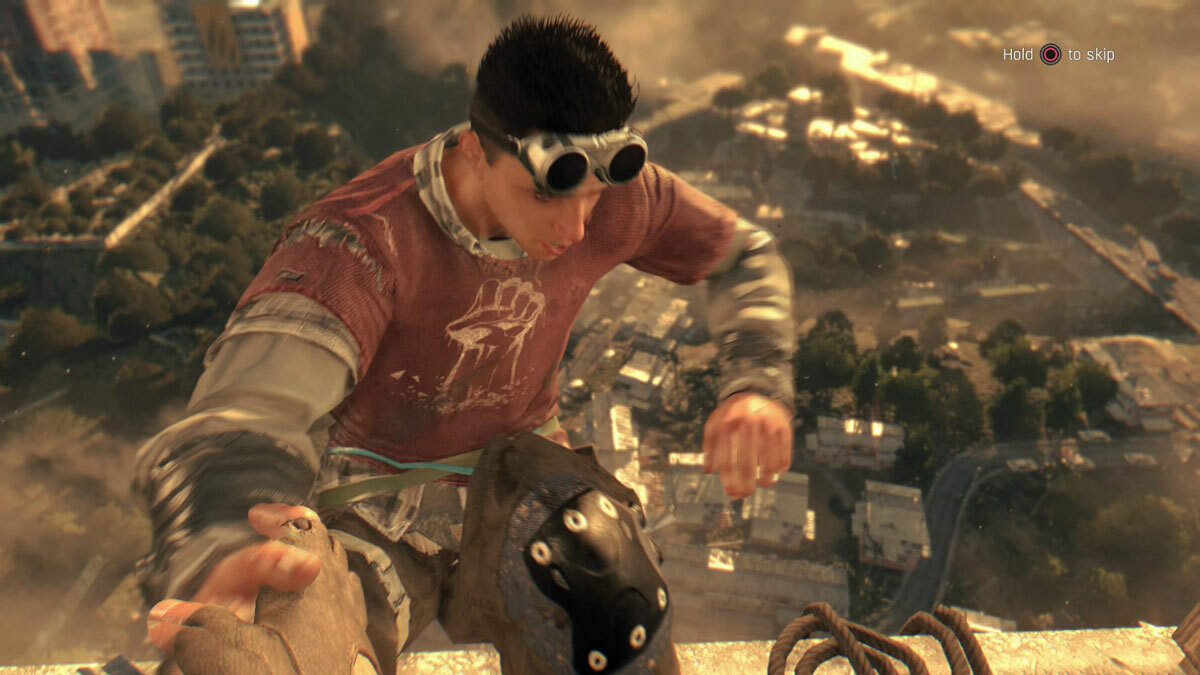
Parkour – essentially the art of jumping over or sliding under things as you run seamlessly through urban environments – has become something of a video game staple in recent years. From the AAA likes of Mirror’s Edge, Assassin’s Creed and Middle-earth: Shadow of Mordor to more casual mobile fare like Canabalt and Vector, we’ve been virtual free-running a lot of late – and here we go again in Dying Light.
The game’s main character quickly finds himself allied with a group of survivors headed by an English free-running enthusiast, which not only gives rise to the script’s best/worst line (“I’m not a leader – I’m a goddamn parkour instructor!”) but provides a convenient reason for all the running and jumping and climbing that goes on. And it makes sense to do all that, given that most zombies you encounter are slow, shambling and unable to climb.
Through visual cues in the landscape, the game hints at where you can run and jump safely. It’s more like Mirror’s Edge than Assassin’s Creed in this regard – it requires more than just the holding down of a single button. After a slightly tricky start, an hour or so into the game we found the free-running mechanics start to gel and with that there was no (well, hardly any) stopping us as we blazed through Harran’s alleyways and across its rooftops.
We ran into (no pun intended) a few problems with some of the game’s climbing sections, because it’s not always obvious what you can and can’t grab onto (and missing often means falling to your death), but overall it’s a welcome feature – and the ability to run very quickly away from things comes in particularly useful at night…
The freaks come out at night
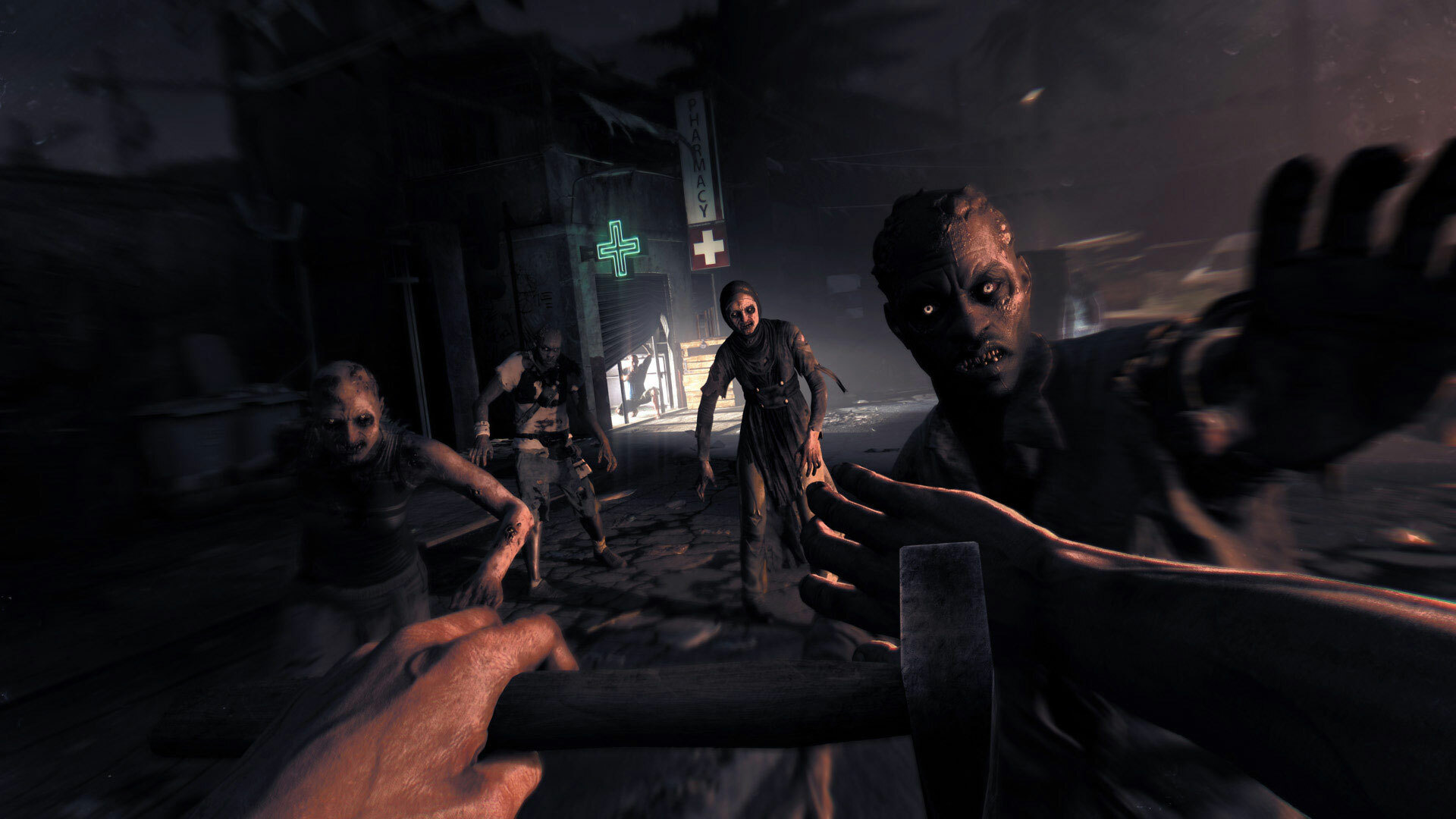
Yep, Dying Light features a dynamic day/night cycle. You’ll be warned when sundown is imminent, and it’s often a good idea then to seek out a refuge in which to wait out the night (you can fast-forward to morning by resting in one of the safehouses you unlock as you progress through the game). Because by night, things get a lot more dangerous out there.
Unlike in many games, the nights here are dark. Really dark. You’ll need to use your torch or special vision-enhancing tools at times or risk blundering off a rooftop, or worse, into a pack of ghouls. But the dark isn’t the only problem: there are special zombies called volatiles that emerge only in the night, and they’re much tougher than the regular kind.
Able to run faster than you, climb just as nimbly, absorb plenty of damage and kill quickly, the volatiles are probably the early game’s toughest foes and avoiding them – or escaping once you’ve been spotted – requires a combination of stealth and luck. It’s a welcome variation from the daytime, where sneaking isn’t really required.
RPG lite
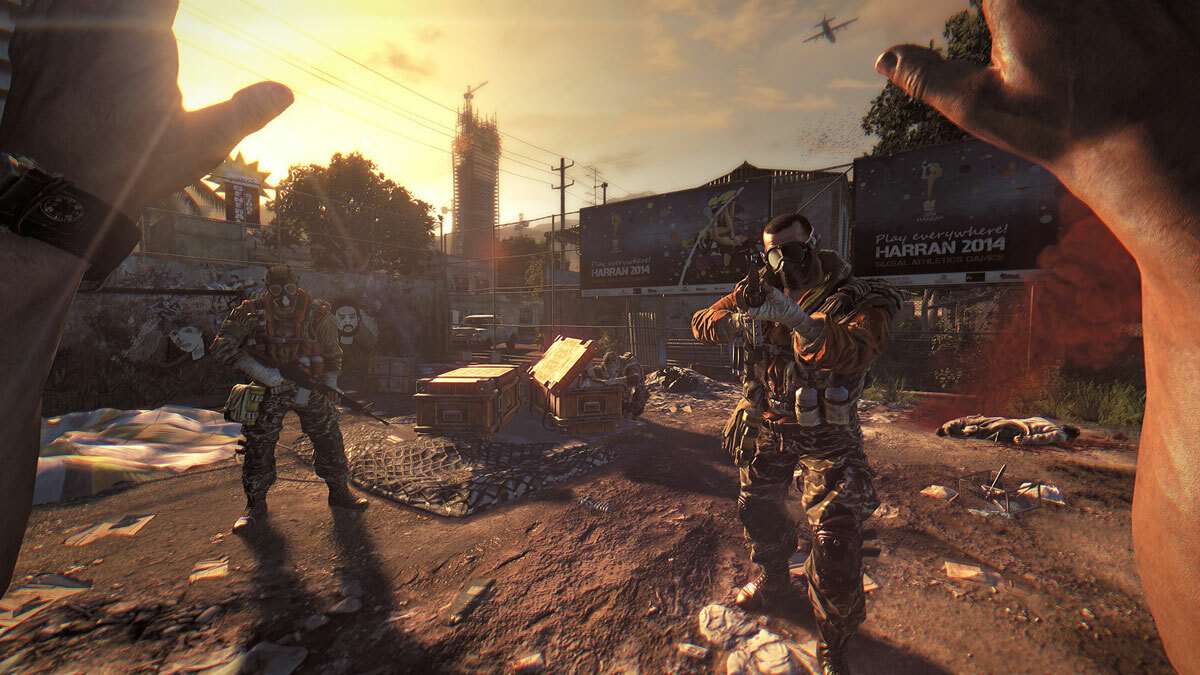
Like Dead Island and the recent Far Cry games, Dying Light boasts a RPG-esque skill tree. The main character gains experience points allowing him to level up his abilities in three different categories: Survival is general (experience is gained through completing missions); Agility is related to free-running (experience gained through parkour, jumping and climbing); Power is related to combat (experienced gained through bashing zombies’ faces in).
This gives you a nice feeling of growing power as you progress through the game, gaining new skills as you do so. It isn’t a full-blown RPG, as the choices are fairly limited, but if you’ve played Far Cry 3 or Shadow of Mordor you’ll know that giving the player a sense of progression, even in an action game, helps keep things fresh and rewarding.
One reason to go out at night is that experience point gains in Power and Agility are doubled, so you can level up more quickly by venturing out after sundown. High risk, high reward.
Better with a friend
As with the Dead Island games, Techland has added a co-op option. Up to four players can join forces to tackle campaign missions, as well as undertake special challenges that crop up as you’re exploring the city of Harran: you may be challenged to reach a specific rooftop faster than your friends, to find the most loot in a particular house or to kill the most zombies in an area.
Co-op does make the campaign a lot easier, which isn’t a bad thing at some points. While we wouldn’t class the game as particularly taxing, there are certain points in the main story campaign where it feels unnecessarily unforgiving, meaning multiple attempts at beating a particular section are required. Co-op, which offers the chance to revive a “dead” teammate, lessens the chances of this happening.
One difference from the Dead Island games is a noticeable – and welcome – extra layer of polish. Dying Light is a fine-looking, fine-sounding game and while it might be a level below true AAA status – we came across a few bugs and glitches, including our character falling through the bottom of the map – its presentation is impressive.
Dying Light verdict
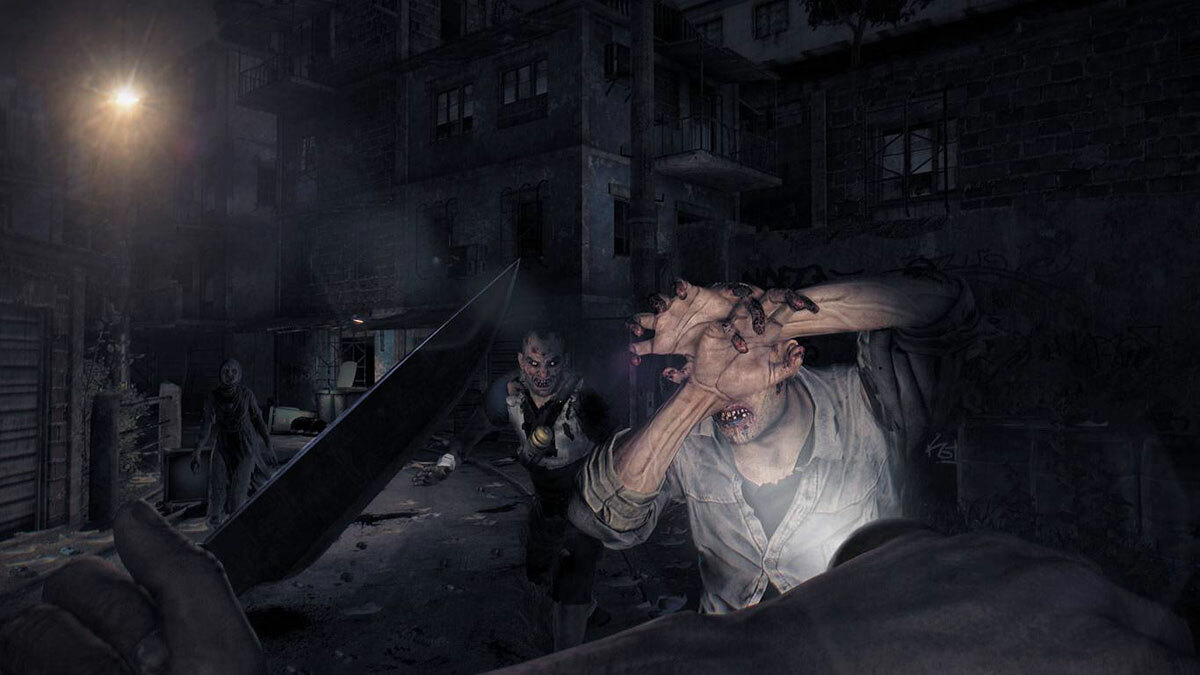
In the end, Dying Light proves itself a diverting addition to the huge and (ever-increasing) roster of open-world games. Drawing inspiration from Assassin’s Creed, Skyrim and the recent Far Cry titles, it musters up enough variety of gameplay, activities, adversaries and locations to keep you entertained for hours.
If the gunplay is average, the B-movie-worthy main storyline all too familiar and the difficulty occasionally frustrating, none of these issues prevents Dying Light from providing a rollicking good time. Bludgeoning zombies is fun, jumping around rooftops is fun and playing co-op is fun, and this game manages all three fairly well. It’s markedly a better, more polished game than its spiritual predecessors.
Dying Light doesn’t excel in any one area – and it doesn’t deliver anything we can point to as clearly “next gen”, as Shadow of Mordor did with its Nemesis system – but this is a solid survival horror in an open-world setting, and we’ve enjoyed our time among the shambling undead.
The Following DLC verdict: ✭✭✭✭✩
Dying Light’s first tranche of heavyweight DLC has arrived in the form of The Following, a full-on expansion that adds a new map area, a new series of story missions and a bunch of new mechanics – all the while maintaining the same core gameplay that has delighted so many gamers over the past year.



